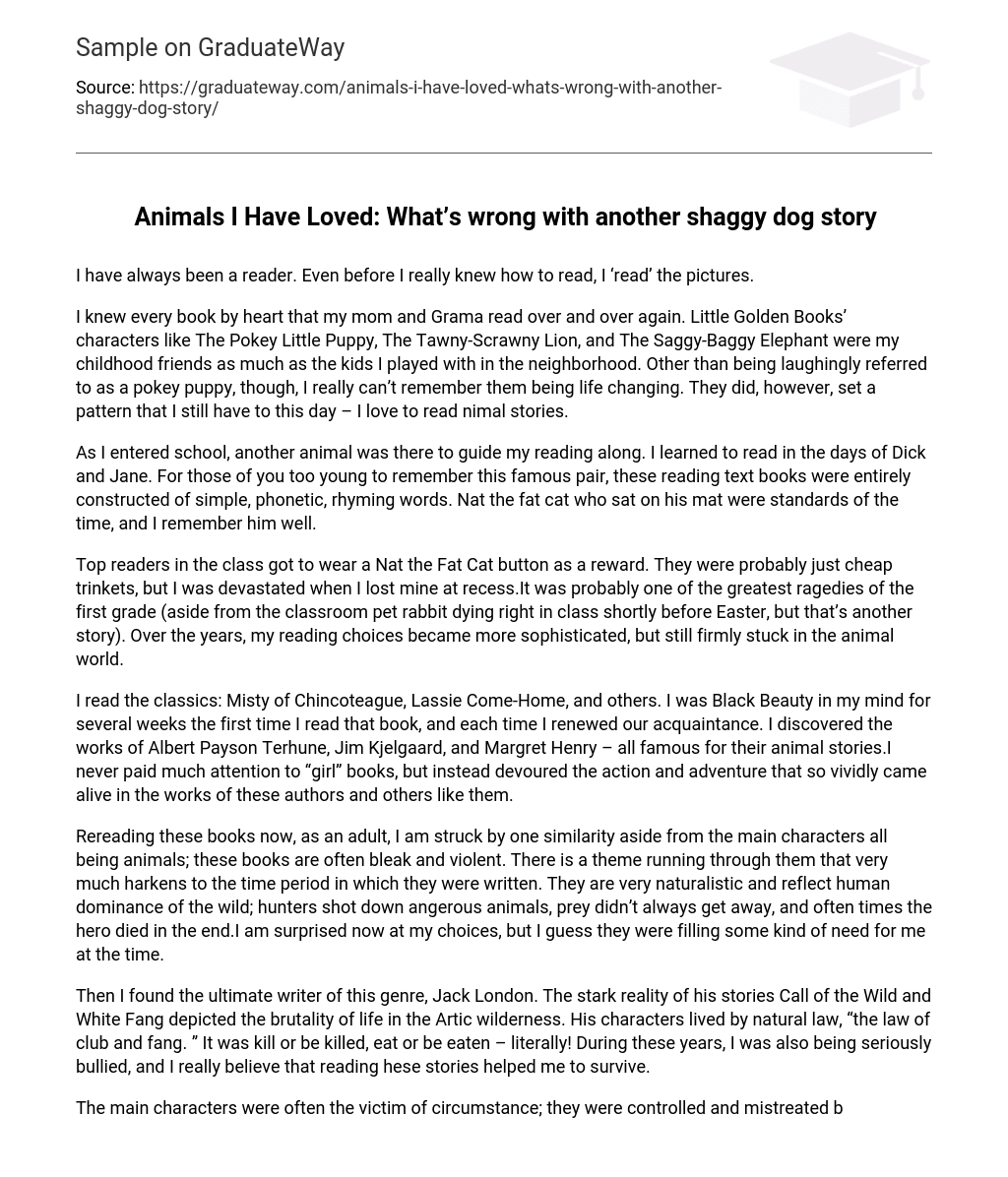I have always been a reader, even before I had fully grasped the skill of reading. I would ‘read’ the pictures.
I was familiar with every book that my mom and Grama read repeatedly, as I had memorized them all. The characters from Little Golden Books, such as The Pokey Little Puppy, The Tawny-Scrawny Lion, and The Saggy-Baggy Elephant, were like dear childhood friends to me, just as important as the kids I played with in my neighborhood. Although they were amusingly known as a slow puppy, I don’t recall them having a profound impact on my life. However, they did establish a habit that still persists today – I derive great joy from reading stories about animals.
In my early school days, there was a companion animal that helped me with my reading. I was introduced to reading through the classic Dick and Jane series. For those who are not familiar with them, these textbooks were made up of easy words that rhymed and were phonetic. One memorable character was Nat, the overweight cat who would always sit on his mat.
The top achievers in the class were given Nat the Fat Cat buttons as a prize. Though they may have been inexpensive souvenirs, I was heartbroken when I lost mine during recess. It was perhaps one of the most tragic events of first grade (aside from the unfortunate demise of our classroom pet rabbit during a lesson near Easter, but that is a separate tale). As time went on, my taste in reading material became more refined, yet still focused on the animal kingdom.
When I was younger, I enjoyed reading classic books such as Misty of Chincoteague and Lassie Come-Home. The book Black Beauty particularly captured my imagination, and I cherished every time I revisited its pages. Additionally, I discovered the remarkable animal stories written by famous authors like Albert Payson Terhune, Jim Kjelgaard, and Margret Henry. Unlike “girl” books, these action-packed adventures truly captivated me.
When I read these books again as an adult, I am struck by their similarity in portraying animals as main characters. However, what stands out the most is their often bleak and violent nature. These books resonate with the time period in which they were written, as they embody a naturalistic theme that reflects human dominance over wildlife. Dangerous animals are hunted and killed, prey doesn’t always escape, and the hero often meets a tragic end. Reflecting on my choices now, I am surprised but recognize that they must have fulfilled some kind of need for me at that time.
Then I discovered the ultimate writer in this genre, Jack London. The harsh reality portrayed in his stories Call of the Wild and White Fang illustrated the brutality of life in the Arctic wilderness. His characters abided by natural law, “the law of club and fang.” It was a matter of survival – kill or be killed, eat or be eaten – quite literally! In those years, I was also undergoing severe bullying, and I truly believe that reading these stories aided in my survival.
The main characters frequently became victims of their circumstances, subject to control and mistreatment by others. I deeply empathized with their plight, finding solace in these animals who served as my closest companions during lonesome and troubled times. I related to and sympathized with their challenges, witnessing their resilience and triumph over adversity as they fiercely battled their enemies and continued to persevere.
Despite its brutality, the experience made my life appear comparatively comfortable and effortless. I believe every child should be fortunate enough to have such wonderful friends during their upbringing.





